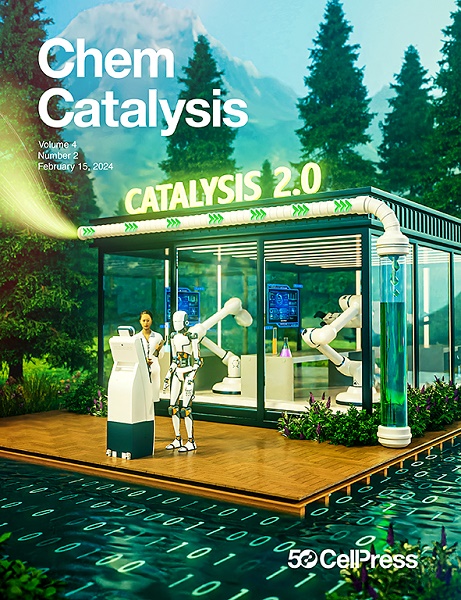将Ⅰ型醛缩酶重新用于光立体特异性自由基偶联
IF 11.5
Q1 CHEMISTRY, PHYSICAL
引用次数: 0
摘要
在最近发表于《自然》(Nature)的一篇文章中,Melchiorre 及其同事阐明了通过 2-脱氧核糖-5-磷酸醛缩合酶与烯醛缩合形成的酶亚氨基离子,引发了活性位点的光羧化,并实现了光酶立体特异性自由基偶联。这项出色的工作拓宽了酶的反应性,实现了 "手性记忆 "的设想。本文章由计算机程序翻译,如有差异,请以英文原文为准。
Repurposing type I aldolase for stereospecific radical coupling with light
In a recent article published in Nature, Melchiorre and coworkers illuminated enzymatic iminium ions formed through the condensation of 2-deoxyribose-5-phosphate aldolase with enals, triggering photodecarboxylication in the active site, and enabling photoenzymatic stereospecific radical coupling. This elegant work broadens the reactivity of enzymes and achieves a “memory of chirality” scenario.
求助全文
通过发布文献求助,成功后即可免费获取论文全文。
去求助
来源期刊
CiteScore
10.50
自引率
6.40%
发文量
0
期刊介绍:
Chem Catalysis is a monthly journal that publishes innovative research on fundamental and applied catalysis, providing a platform for researchers across chemistry, chemical engineering, and related fields. It serves as a premier resource for scientists and engineers in academia and industry, covering heterogeneous, homogeneous, and biocatalysis. Emphasizing transformative methods and technologies, the journal aims to advance understanding, introduce novel catalysts, and connect fundamental insights to real-world applications for societal benefit.

 求助内容:
求助内容: 应助结果提醒方式:
应助结果提醒方式:


